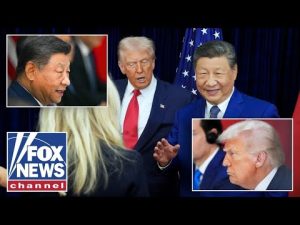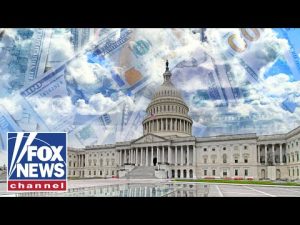The United States is stepping back into the world of nuclear testing after more than three decades of dormancy. This news comes as a surprise to many, signaling a significant change in the nation’s defense strategy. With the world watching closely, the President expressed the rationale behind this seemingly bold move. He noted that while the U.S. holds the most nuclear weapons, it has not engaged in testing for years. However, he believes it’s necessary to adapt as other countries ramp up their nuclear activities.
In recent remarks, the President highlighted the growing arsenals of Russia and China. He mentioned that while the U.S. has stopped testing nuclear weapons since 1992, other nations have not held back. Russia has conducted tests to develop its capabilities and China is expected to catch up within a few years. The President asserted disarmament would be ideal, but first, the U.S. must ensure its own defenses are not lagging. This means considering a return to nuclear testing as a way of demonstrating readiness against emerging threats.
The decision has sparked discussions across various expert circles, particularly those who specialize in national security. There has been a longstanding debate about the merits of nuclear testing. Previous administrations, including those of George W. Bush, Barack Obama, and Joe Biden, have avoided engaging in testing due to the complex ethical implications and potential for global tension. However, the current administration seems to be sending a clear message: the U.S. intends to protect its interests in a world where potential adversaries are enhancing their military capabilities.
Experts indicate that if this testing resumes, it will likely involve underground tests rather than large-scale explosions with visible mushroom clouds. The nature of nuclear testing has evolved, and much of the need to check the nuclear arsenal can be done through advanced simulation and monitoring techniques. While some experts believe the U.S. remains secure without conducting explosive testing, the drive to keep up with advancements in delivery platforms—those vehicles that deploy nuclear weapons—is critical. Countries like Russia and China appear to be making strides in this area, investing in next-generation technologies.
Moreover, there are fears that the U.S. could fall behind in the race to modernize its nuclear capabilities. While the U.S. might not be directly in need of explosive testing, the advancements made by other nations in terms of nuclear missiles and delivery systems can’t be overlooked. Analysts note the urgency for the U.S. to bolster its arsenal with new technologies to maintain a strategic advantage. The changes in global military dynamics heighten the stakes, and the pressure is on for the U.S. to enhance its nuclear posture while navigating the tricky waters of international relations.
In conclusion, the resumption of nuclear testing in the U.S. after a long hiatus is a momentous shift that reflects the evolving global landscape of military might. The path ahead will require careful consideration of how best to ensure national security while simultaneously engaging diplomatically with countries like Russia and China. In the world of geopolitics and defense, the game is changing, and the U.S. has made it clear that it intends to be an active player once again.







